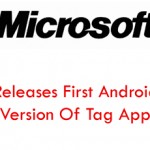 San Francisco — Search engine behemoth Google reportedly appears to have set its sights on the television set-top box carrying out a modest test in conjunction with Dish Network Corp., The Wall Street Journal reported late Monday. According to the newspaper, citing “people familiar with the matter,” said the service runs on TV set-top boxes using Google’s Android operating system
San Francisco — Search engine behemoth Google reportedly appears to have set its sights on the television set-top box carrying out a modest test in conjunction with Dish Network Corp., The Wall Street Journal reported late Monday. According to the newspaper, citing “people familiar with the matter,” said the service runs on TV set-top boxes using Google’s Android operating system
Viewers search satellite programming alongside websites such as Google’s YouTube with a keyboard and watch videos from either source on their televisions. According to the report, Google has been experimenting “television programming search service” for the past year in a partnership with Dish Network, Corp., which supports a subscriber base in excess of 14 million. Surprisingly, the story is also quick to point out that the project “could be discontinued at any time.”

“Google’s trying to replicate the internet experience on TV,” said WSJ’s Jessica Vascallero, “but it is just the beginning, and they are experimenting a lot of formats.” She claims a small group of Google employees is currently kicking the tires on the service, but that Google nor Dish Network would comment about the test.
Google commands online search, and is obviously eager to extend its reach to the other main screen in most homes. The report says it allows users to search content from Dish, when people explore for television programs and web video content on these boxes, they would encounter Google’s keyword and display ads, giving the search and advertising giant another way to reach consumers and profile their preferences.
The service caters to around 14 million satellite TV subscribers, the service, would operate on TV set-top boxes containing Google software, empowering users to find shows on the satellite-TV service as well as video from Web sites like Google’s YouTube. In addition, the service will also allow users to personalize a lineup of shows, all by conducting a search using a keyboard, instead of a remote control.
Google currently generates the largest amount of its revenue from online advertising. The WSJ report gave pretty little details but notes that users would search via keyboard, rather than remote control. It also mentioned that Google hoped to connect the service with its TV ad-brokering business. The tests reportedly began last year. Google declined comment for the WSJ story.
Moreover to displaying video from YouTube, possibly Hulu, and other web video sites alongside television programs, these set-top boxes reported run the Google Android operating system also found on Google’s phones.
Google last year abandoned two other advertising initiatives, the first one its Print Ads program, an attempt to auction off space in newspapers to bargain-seeking advertisers, and the second one its radio advertising service.
Google is not the only one in shifting from the internet into the alluring kingdom of television. Denizens of Dallas using Verizon’s FIOS service have access to social media services like Facebook, and Twitter, in addition to added internet-based features from ESPN, Veoh, blip.tv and Dailymotion. Verizon also plans an open development platform to permit developers to write interactive FiOS TV applications that will be available through the Widget Bazaar.
Nevertheless, whatever takes place with these boxes, Vascallero said consumers should not hold their breath because it could be years until they can get their hands on a Google-powered television.


